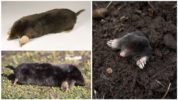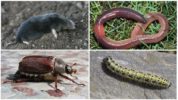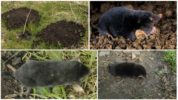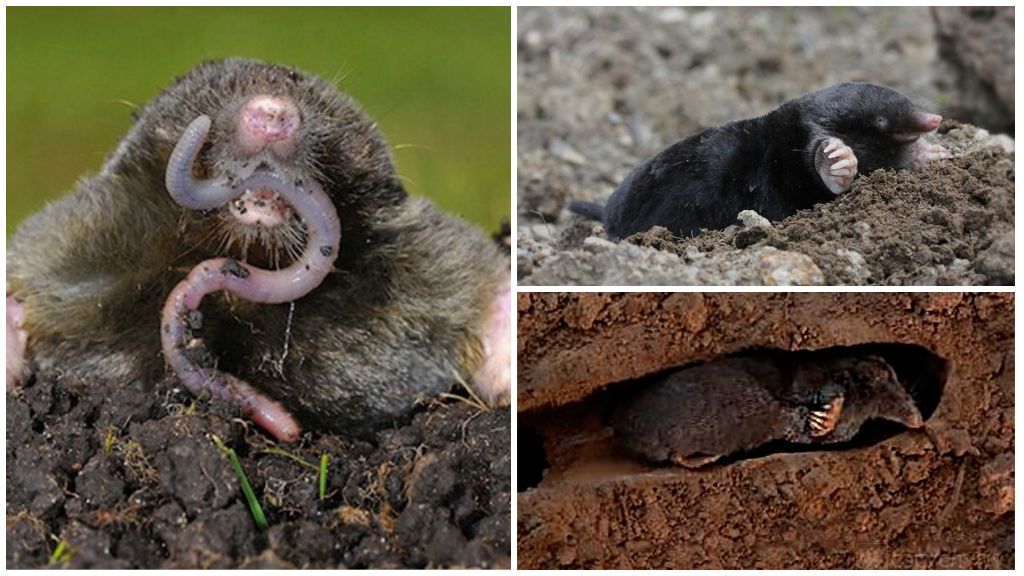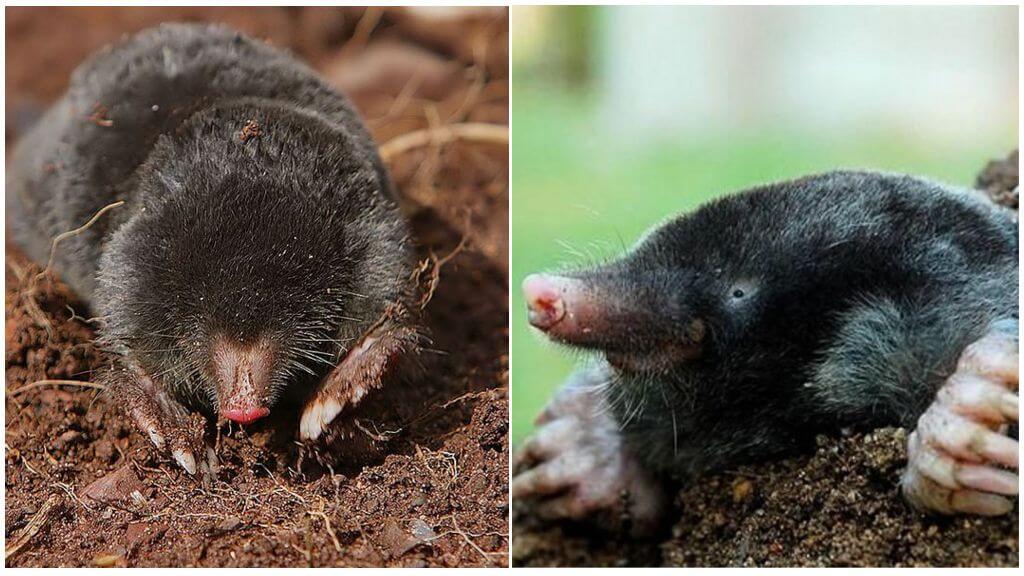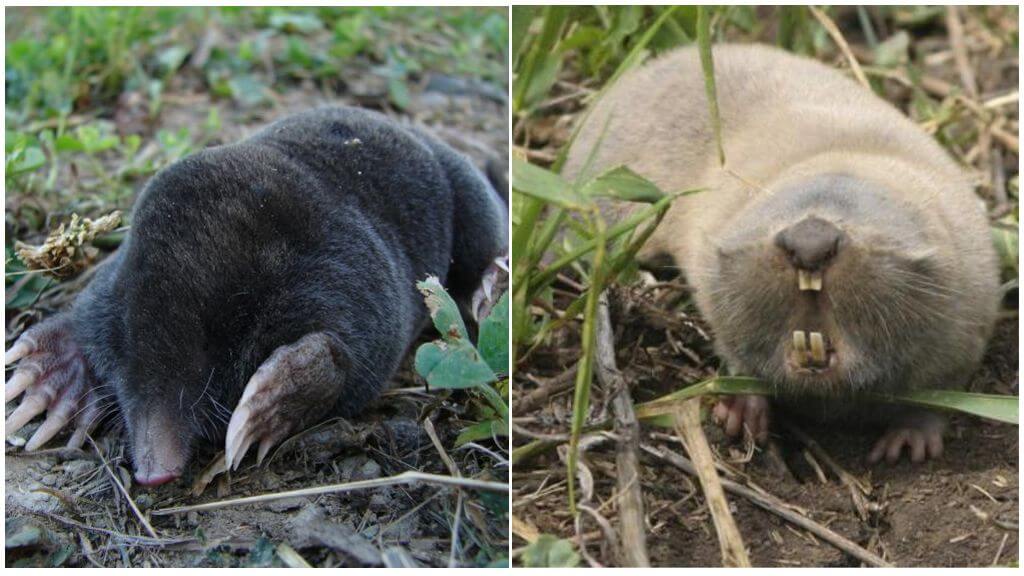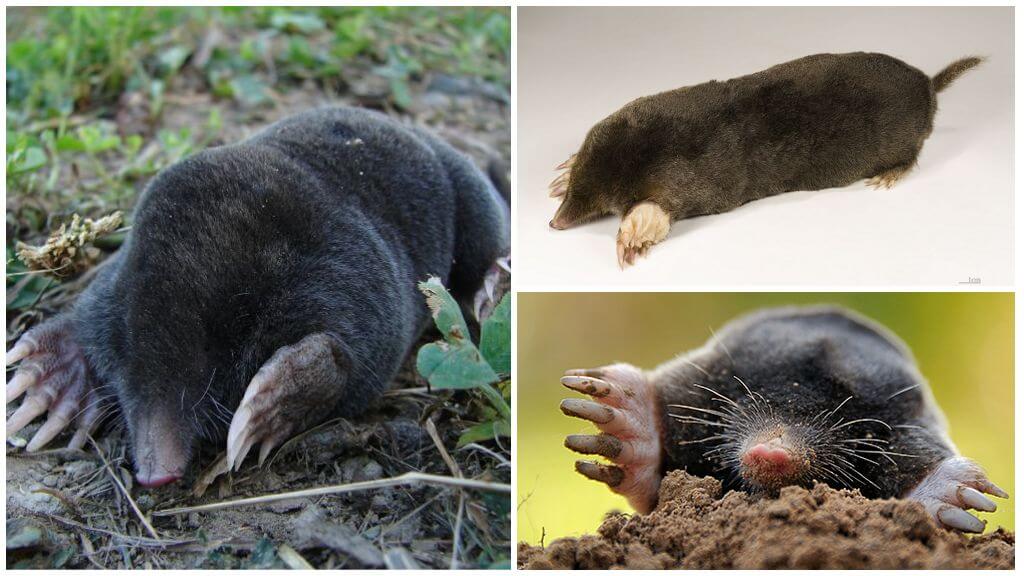- Common moles
- Food for the mole
- Mole species
What kind of life European or ordinary moles lead: where they live, what they eat, how the offspring are raised and how they differ from other subspecies of moles - information for curious and interested people.
Biological description
Common moles (Latin name Talpa europaea) are small mammals; according to the classification, they belong to the order of shrew-like moles. The size of the elongated body, which ends with a small tail, can reach 11-16 cm, weight - 80-130 g. Males are usually larger than females.
Moles Look unusual for an underground resident. The forepaws of moles are more developed and stronger than the hind legs, are shovel-shaped with claws and are used to make underground passages and build holes.
On a note!
Unlike mole rat rodents ordinary moles do not have front incisors for digging the earth.
The head of a European mole has the shape of a cone with an elongated pink proboscis nose. The eyes are very small, closed by moving eyelids, devoid of the lens and retina, which is why the animal sees almost nothing. In some species of mole, vision is completely absent due to skin overgrowth. There are no external ears, but they have excellent hearing, as well as the possibility of smell and touch.
The coat of an ordinary mole is thick and short, found in various shades: from dark gray, brown to black. It grows perpendicular to the skin, due to which animals can easily move back and forth in tight underground spaces. Shedding of fur occurs three times a year in the spring-autumn period. The tail is short, the hairs on it complement the tactile abilities of the animal and allow it to move in the rear direction.
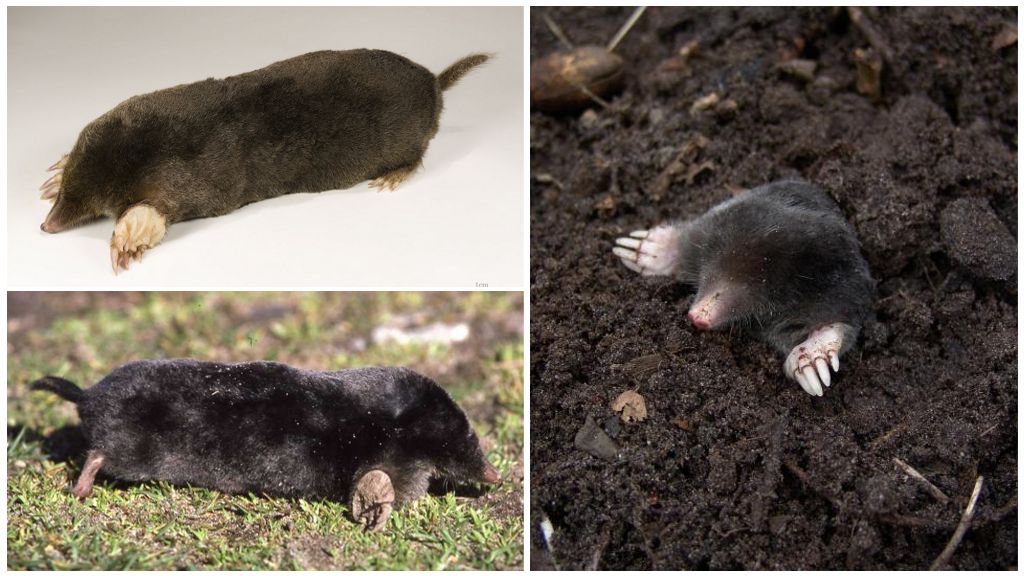
Lifestyle & Habitat
Ordinary moles lead an underground lifestyle, almost constantly making moves, starting from the first spring months until the onset of cold weather. On the surface of the soil, their activity is immediately noticeable by the appearance of molehills, the size of which depends on the friability and moisture of the soil. They prefer soils that can be easily digged with their paws.
Activity of these earth moving animals lasts all year, only in the winter months they go deeper into the ground, laying new passages located below the level of soil freezing.
Interesting!
Scientists estimate that in one night mole can make an underground passage up to 50 m long, and the total area of its galleries and burrows reaches 800 square meters. m. For breeding, they dig nesting chambers at a depth of about 1.5-2 m.
The underground passages of ordinary moles are a huge system of multi-tiered galleries with a diameter of up to 5.5 cm, some of them are horizontal, but there are also inclined drifts leading to the nest.
Mole moves are:
- superficial, with a depth of 1-5 cm, when the animal pushes the earth with its paws to the sides and up;
- deep moves up to 50 cm in size are created when the soil is thrown to the surface where molehills are obtained.
Also, according to their purpose, the moves of ordinary moles are divided into:
- residential, leading to a nest or to water;
- feed used for hunting.
Distribution area corresponds to the name: European countries. Several subspecies of such animals live on the territory of Russia: European, Altai, Caucasian and small.Ordinary moles inhabit almost the entire European territory of Russia, the Urals and Western Siberia. Their habitats: clearings and forest edges, floodplains and upland meadows.
Ordinary moles swim beautifully, so they can move to the opposite bank of the river for hunting. But on the surface of the earth they are rare: because of the short legs they only move crawling, so going up can end in death from an attack by enemies, including foxes, owls, martens and other predators.
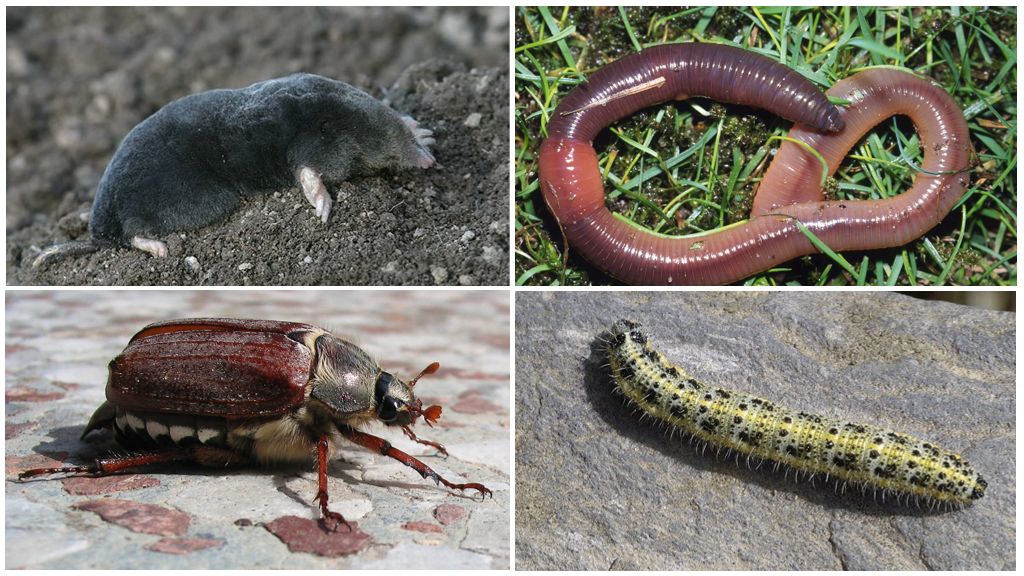
Mole's diet: earthworms, insects (Khrushchev, butterflies, wood licebeetles) and their larvae. Moreover, earthworms themselves crawl on the musky smell, which is typical for mole passages. Food collection takes place when the animal moves under a layer of earth. If too much food is found, then the animal can put it in reserve, for which it bites off the victim’s head, immobilizes it, and then puts it in one of the underground chambers. In the winter, digging up the highest molehill, you can find reserves in the form of hundreds of worms.
On a note!
Common moles eat 3-4 times a day, consuming 20-30 g of worms or other food at a time. After the next “lunch”, the animal retires to rest in a nest, where it curls up and sleeps for 3-5 hours. They can endure hunger only for 14-17 hours and if they then do not find food, they die.
Breeding
The nest, in which an ordinary mole rests or grows offspring, is usually located under the roots of trees, below stumps or bumps, under buildings at a depth of 1.5-2 m. Its bottom is covered with dry grass or soft moss. Typically, such a hole has several inputs and outputs.
Moles are solitary mammals; they form pairs only in the mating season, which happens in early spring. They reach puberty by the age of one. A fertilized female prepares a nest for herself.
Cubs are born after 40 days of pregnancy completely bald. Their number is usually 5, but sometimes up to 8. For 30 days, they feed only on mother's milk, and then grow up and go into their own holes. If one of the cubs does not want to leave the nest, then his mother drives him away and even bites him, seeking care for an independent life.
Interesting!
Adult males are very aggressive in nature, they are able to attack neighbors and even bite them, after which they can eat, showing cannibalism skills. Adult males are very aggressive in nature, they are able to attack neighbors and even bite them, after which they can eat, showing cannibalism skills. When catching a mole it’s very difficult to hold it in a person’s hands, besides, the animal bites and scratches, therefore it is possible to catch it only with gloves;
Types of moles and their differences
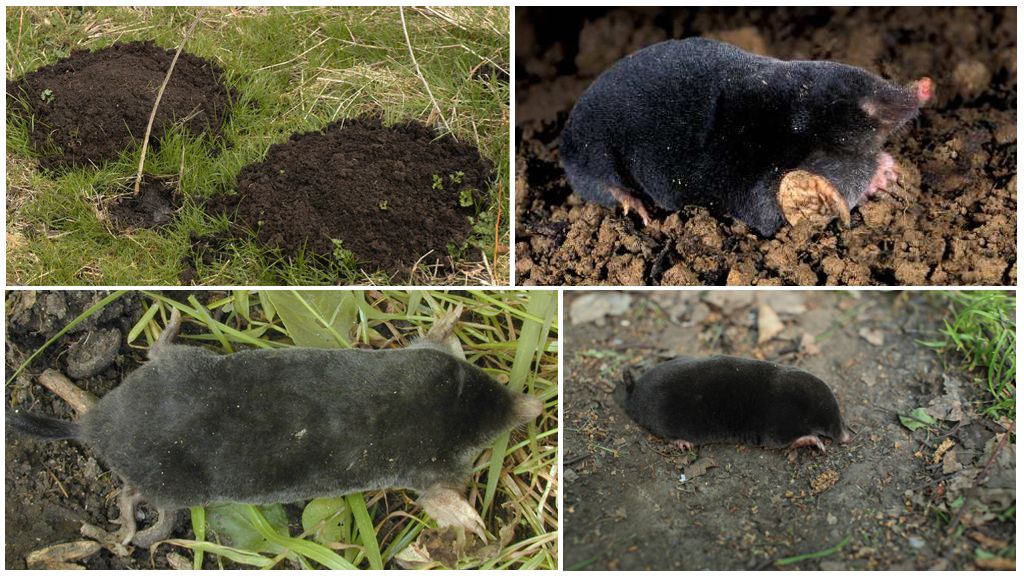
In Russia, there are other types of common moles:
- Siberian or Altai mole (Talpa altaica) - characterized by a shorter tail and the presence of small teeth, their eyes are open, but they differ poorly among the thick fur. The fur consists of long hairs of 8-12 mm. Body size: 13-19 cm, in females up to 17 cm. Hair color: dark gray or black-brown; animals with spots or white-yellow hair are found. It lives in mountain regions in the south of Siberia. In this species, the pregnancy in females lasts up to 270 days due to the latent period. Life expectancy of 5 years.
- Small or blind (Talpa caeca) - is the smallest mole, its body reaches 8-12 cm in length. The fur is usually black-brown or black. It lives on the Caucasus isthmus, Turkey and in the northern part of Iran. The diet consists of insects and larvae of beetles, almost does not eat worms. The birth of babies takes place in February-March, in the litter of 1-5 cubs.
- The Caucasian mole (Talpa caucasica) has dimensions of 10-14 cm, weight up to 95 g. The body is covered with black velvet fur, large teeth. It lives in the region of the Caucasus Range and Turkey.It also feeds on earthworms. Propagated 2 times a year, in the litter of 2-4 babies.
Benefit and harm
The main benefit of moles is their eating of harmful insects and loosening of the soil, which is well enriched with organic substances.
The main benefit of moles is their eating of harmful insects and loosening of the soil, which is well enriched with organic substances.
In agriculture and in garden plots, common moles do a lot of damage due to damage to the roots of useful crops and the destruction of a large number of earthworms. Gardeners and gardeners for almost the entire season fighting underground digging animals with help folk and store funds.
